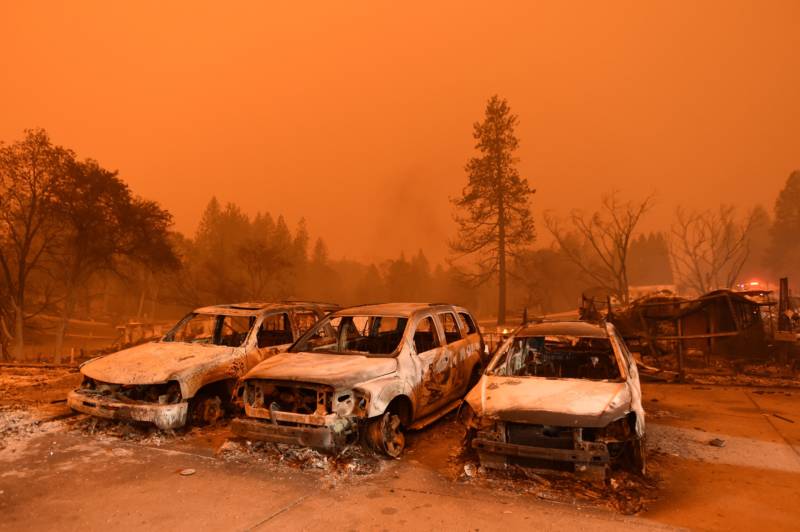Many things felt familiar covering the Camp Fire. I remembered the streets of Chico and Oroville, which I’d sometimes visit from Redding to cover stories. I saw some of my favorite places to grab a bite. And I ran into a few faces I recalled from way back when. (More on that in a moment.)
What didn’t seem familiar was this: It was chilly during fire season. The idea that you’d need a winter coat while covering wildfire seemed — quite simply — unnatural. That’s because it was November. Fifteen years ago, fire season didn’t last that late into the year.
I filed this observation in the back of my mind until this holiday weekend, when the U.S. government released a stunning climate report on the Friday after Thanksgiving, when it got far less attention than it’s due.
The Fourth National Climate Assessment reflects the research of scientists from across the federal government. It tells us the following: The frequency of wildfires is increasing; fire season is indeed getting longer; and exposure to fire risk — for both people and their property — is going to get worse.
And, the report says, these shifts are caused by human-caused climate change. Yes, that phrase is used in a government report, and it’s a key premise, not a topic of debate. The report writers — a panel representing 13 federal agencies — argue it’s only going to get more expensive to deal with the interconnected impacts, which include health effects, emergency response and fuel management.
As the Camp Fire taught Bay Area residents, impacts like abysmal air quality aren’t restricted to those living near the the wildland-urban interface, a phrase that’s now entered the California lexicon. The U.S. Forest Service describes it as the zone “where houses and other development meet or mix with undeveloped natural areas”. About a third of Californians now live in these areas.
The key conclusion laid out in the National Climate Assessment is that global warming could force millions of Americans to move. And the U.S. isn’t prepared. Given the current state of our politics, the prospects of working together to address this look grim.
Oddly enough, this report was released by the administration of President Trump, who has called the concept of climate change a hoax.
During my coverage of the Camp Fire, I ran into someone whom I hadn’t seen in more than a decade: Congressman Doug LaMalfa. He’s one of the few California Republican incumbents re-elected to office earlier this month. During my time in the North State, LaMalfa was a state assemblyman known for his white Stetson hat and his day job as a rice farmer in the community of Richvale. I saw him at a Cal Fire press briefing in Chico shortly after the Camp Fire broke out, before President Trump had visited the region but after he’d fired off on Twitter about California being to blame for its forest management practices.
In the past, LaMalfa has said he doesn’t “buy the idea that man-made activity is responsible” for climate change.
When I asked Rep. LaMalfa about the personality clashes between President Trump and both Gov. Jerry Brown and Gov.-elect Gavin Newsom, he brought up the crisis at the Oroville Dam, when nearly 200,000 people were forced to evacuate after the dam’s spillway system failed.
“That was right at the height, immediately after the president’s election and swearing-in, when California decided to go on a complete jihad against the president for opposition purposes,” Rep. LaMalfa told me.
“But soon after that, the governor had to make a request of the president, and I also called the White House to pave the way,” he said. “The president has responded within a short amount of time on every single disaster that California’s asked about.”
The price tag of the spillway incident now stands at $1.1 billion, and FEMA may end up picking up as much as 75 percent of the tab.
But no one lost their lives or their homes, like so many have in Butte County this month. Sadly, the spillway disaster offered a dry run for evacuations that have gone on far longer for Camp Fire victims.
The fight against climate change has emerged as a signature issue for Brown, who’s preparing to leave office. Newsom seems prepared to continue that legacy.
